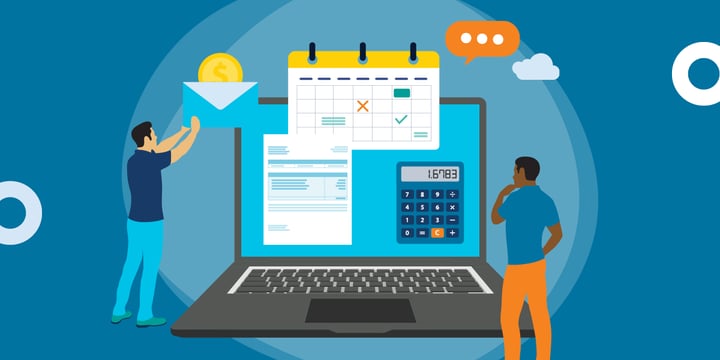If your organization is setting up payroll for the first time — or switching providers — there's a lot to take into consideration. While there are many similarities between how for-profit organizations and nonprofits pay and withhold payroll taxes, there are definitely some differences too, depending on the structure of your organization.
That's why it's important to make sure you choose a payroll provider that will accommodate your specialized needs. From features to pricing to nonprofit-specific capabilities, here's what to look for when choosing payroll software — plus how to make sure you're making the best decision for your organization.

Why Should Your Nonprofit Consider Payroll Software?
On average, small businesses spend just over 18 hours per month paying employees if they're running payroll themselves. That's why 60 percent of businesses have opted for payroll software to help them get the job done more efficiently — and cut down on mistakes. Payroll can be even more complex for a nonprofit than for a for-profit business, so you may see even more time savings and peace of mind.
What to Look for in a Payroll Provider
When looking through your options, here are a few key features and functionalities to take into consideration:
- Tax filings with an error-free guarantee: In addition to calculating wages and paying employees and contractors, the best providers will automatically file and pay all of your local, state, and federal payroll taxes with an error-free guarantee. That includes annual W-2 and 1099 forms.
- Cloud-based or installed? At this point, most popular payroll providers are in the cloud, which gives you the ability to run payroll from anywhere while avoiding software updates or difficult migrations.
- Nonprofit-specific requirements: If your organization is a 501(c)(3), you're exempt from paying FUTA taxes, so your provider should be able to exclude those taxes from their payroll calculations. And if you're a church, you may also need software that can handle parsonage allowances. Be sure to ask providers about these services or ask your accountant for help if you're not quite sure what your obligations are.
- Customization capabilities: You should consider what kinds of customization capabilities the software offers. First, are there different permission levels for organization admins, employees, or any outside advisors that may need access? Are you able to generate the reports you need to understand your team's labor expenses and keep your board or donors in the loop?
- HR and compliance: Many payroll platforms also include robust HR tools and features to help you stay compliant, especially because most smaller nonprofits don't have their own HR departments. The HR features offered should help your business run more smoothly by streamlining the hiring and onboarding process, providing PTO tracking and approval, helping with compliance management, and offering a space to store key documents and forms.
- Integrating with your other tools: If you're already using time-tracking or accounting software, it's important to make sure your payroll software will work seamlessly with them. If you set things up right, you'll save time, avoid errors, and make things easier for accountants and bookkeepers.
How to Compare Solutions
Start by doing some research, just as you would when trying a new restaurant or renting a place to stay. You can check out customer ratings on sites like G2Crowd, Capterra, and TrustPilot. Or, read reviews on reputable sites like PC Magazine.
Once you've whittled down your choices, make sure you have a clear picture on pricing. Typically, pricing involves a base fee and an additional fee for each worker you pay. While that may seem simple, some providers charge per pay run, and others charge a monthly fee (which effectively cuts the price in half).
Also make sure you understand add-on fees. Some providers charge additional annual fees, fees for setup, direct deposit, integrating with other software, tax filings (including W-2s and 1099s), and having employees in multiple locations or states. Fees can really add up, so ask for a line-by-line breakdown if you're at all uncertain about how much a provider will charge you.
Save Time with Cloud-Based Payroll
One example of a cloud-based payroll system with transparent monthly pricing is OnPay, which offers a special discount for nonprofits through TechSoup.
Whether you're setting up payroll for the first time or switching providers, taking the time to understand your needs and make sure your provider can meet them will save you and your team a lot of time, money, and headaches.
Additional Resources
Last updated: March 27, 2025.








